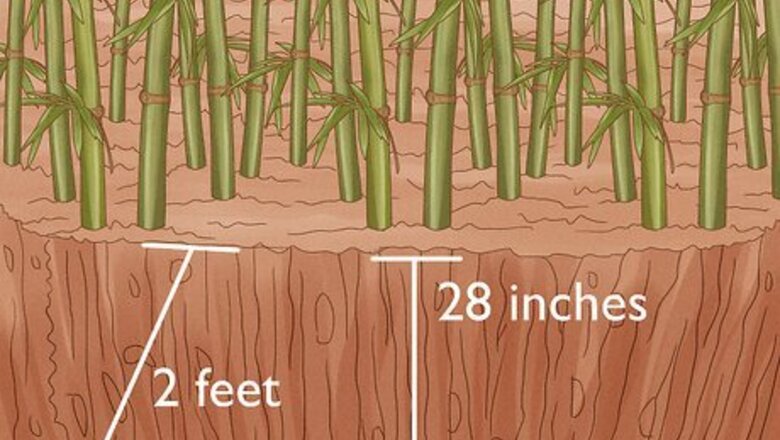
views
Adding Rhizome Barriers to Surrounding Soil

Dig a trench around the bamboo. Dig a trench that is 28 inches (71 cm) deep. The trench should be at least 2 feet (61 cm) away from the bamboo shoot. Once the trench is dug, you should be able to locate the bamboo rhizomes growing horizontally under the ground. The rhizomes will look like the main stalk of bamboo growing out of the ground. Dig a couple of inches (cm) deeper if you don’t find any rhizomes.
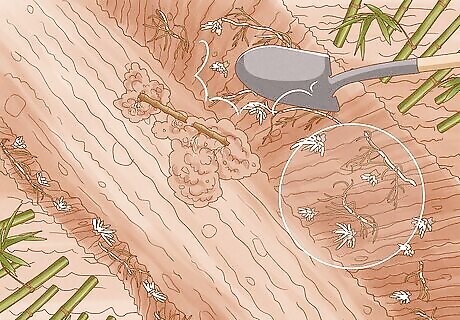
Sever and remove the rhizomes to control the direction of growth. If you don’t want the bamboo spreading any further at all, you’ll need to sever and remove all the rhizomes 2 feet (0.61 m) away from the main stalk. Cut through all the rhizomes in two places with a pointed shovel and remove the separated sections. If you’d like to contain the bamboo to just a specific part of the yard, sever the rhizomes growing outside of the desired bamboo area. You can also try using a saw to cut thicker bamboo shoots and rhizomes. However, you'll have to dig out the soil all the way around the rhizome in order to get clear access to it with the saw.
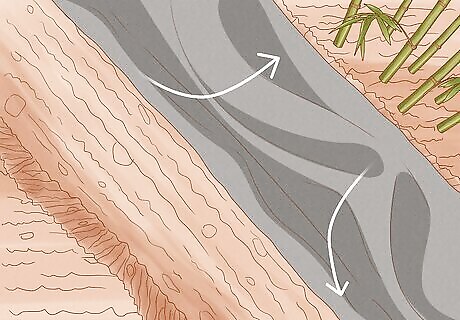
Place a plastic root barrier in the trench. You can purchase a plastic root barrier specifically made for bamboo online or at a home and gardening store. Unroll the plastic root barrier and place it in the trench, so that it completely blocks off the rhizomes. The root barrier must be installed at least 28 inches (71 cm) deep to prevent new rhizome growth.
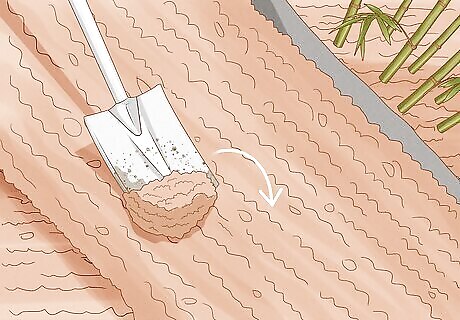
Fill the trench back in with soil. Filling in the space between the trench walls and the root barrier will hold the barrier in place and make it less noticeable. If you want to hide the barrier completely, cut the top of the barrier with gardening shears so that it runs flush with the ground. Cover the top of the barrier with soil and pat it down.
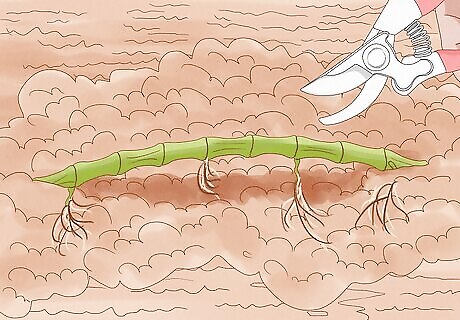
Monitor the rhizomes and continue to cut them as they grow. The rhizomes will continue growing out as the bamboo grows. If you want to prevent new stalks from coming up in a specific area, you’ll need to sever and remove all the rhizomes underground in that area. Running bamboo rhizomes can grow 3–5 feet (0.91–1.52 m) per year and must be cut at least twice annually to control. Clumping bamboo rhizomes are less invasive than running bamboo and will only grow 1–3 feet (0.30–0.91 m) per year. This type of bamboo should be cut annually.
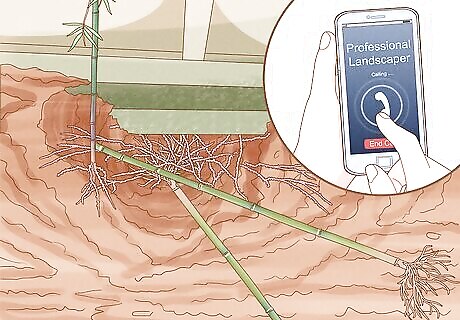
Hire professionals if the spread is too aggressive. If you've let the bamboo spread, it may be difficult to remove all of it yourself. If you can’t sever the rhizomes because they are too thick, call a professional landscaper with the tools to do it. Call local landscaping companies and ask them if they have the equipment to cut larger bamboo rhizomes.
Killing Bamboo with Herbicides

Purchase an herbicide with glyphosate. Glyphosate is a chemical herbicide that will eradicate an entire stalk of bamboo and the rhizomes growing underground. Search online or at a home and gardening store for a weed killer with glyphosate as an active ingredient. Herbicides that contain glyphosate will kill any plants that come in direct contact with the herbicide. This is because it is a non-selective herbicide. Popular brands of herbicide that contain glyphosate include Roundup Pro Herbicide, Tiger Brand Quick Kill Concentrate, and Ace Concentrate Weed & Grass Killer.
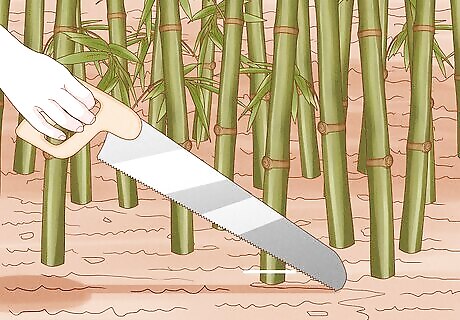
Cut the bamboo down to the ground. Use a manual or electric saw and cut down the bamboo near its base, so that it runs flush with the ground. If you are cutting down a very tall bamboo plant, cut down the top of the plant first, then make another cut towards the base of the bamboo. Late winter is the best time to cut the bamboo down.
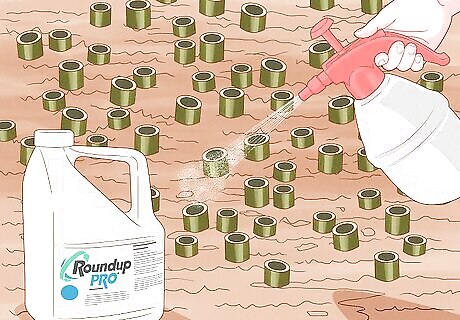
Apply the herbicide to the bamboo stump. Wait till the bamboo shows new growth. Applying the herbicide to the new growth will kill the bamboo stalk and the rhizomes under the ground. Sprinkle or spray the herbicide onto the top of the bamboo stump. Wear rubber gloves, long sleeves, long pants, close toed shoes, and protective eyewear when handling the herbicide. Diluting the herbicide with water may weaken it and makes it ineffective. Always read the instructions before using herbicides. There are specific moisture and temperature requirements to keep in mind when using these types of products. Do not apply this herbicide in or near bodies of water or you may kill surrounding wildlife.
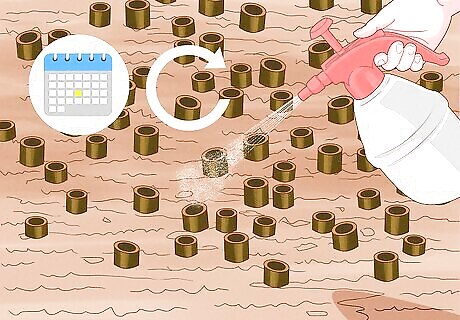
Repeat the process once a month until the bamboo dies. It may take up to 4 applications of the herbicide to fully eradicate the bamboo. Continue to cut down new growth and apply the herbicide through the spring and summer.
Removing Bamboo Manually
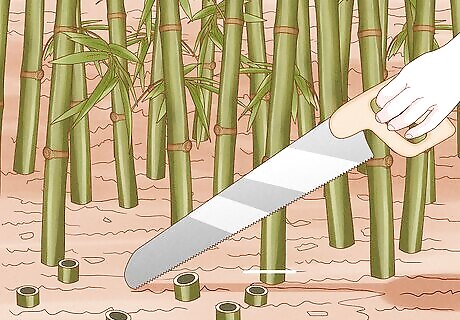
Cut the bamboo stalk to ground level. Use a pruner or saw to cut the bamboo down to ground level. Cutting down the main stalks of the bamboo will weaken it, but won't kill it completely.
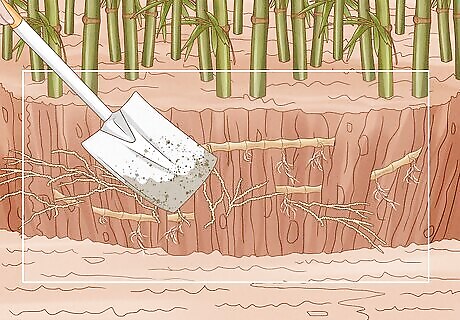
Dig around the bamboo and sever the rhizomes. Dig a hole around the stalks of bamboo and sever the underground roots or rhizomes from the main stalk with a pointed shovel. The rhizomes will look like the main bamboo stalk, but will be growing underground. Severing and removing these rhizomes will prevent the bamboo from spreading underground.
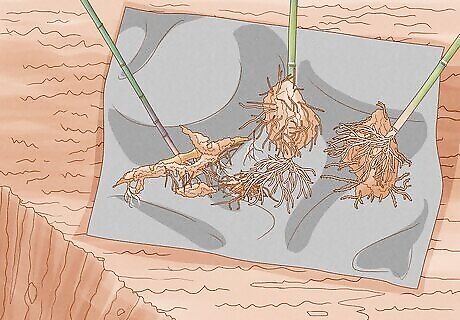
Remove any existing rhizomes leading from the stalks. If you want to completely eradicate the bamboo, you'll have to follow the length of the rhizomes underground and remove them completely. This will stem new bamboo growth. Clumping bamboo's roots are clumped closely together, which make them easier to remove. Running bamboo will grow underground and can spread at a much quicker rate.
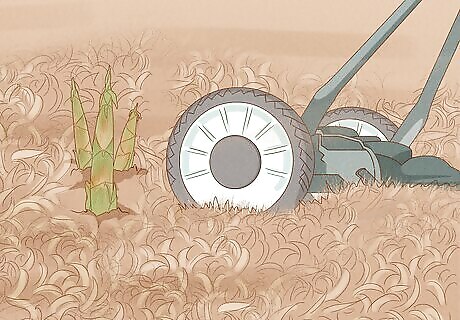
Mow over emerging bamboo stalks. Bamboo can be mowed occasionally without killing it, but constant mowing over a long period of time will weaken it enough to prevent future growth. Continue to mow over new growth until the bamboo stops growing. If new stalks come out of the ground, it means that you haven't fully removed the rhizomes.













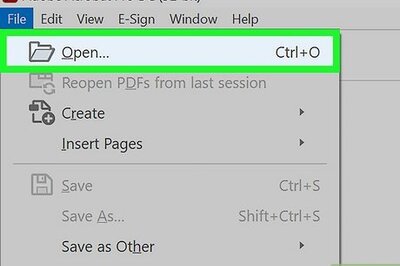






Comments
0 comment